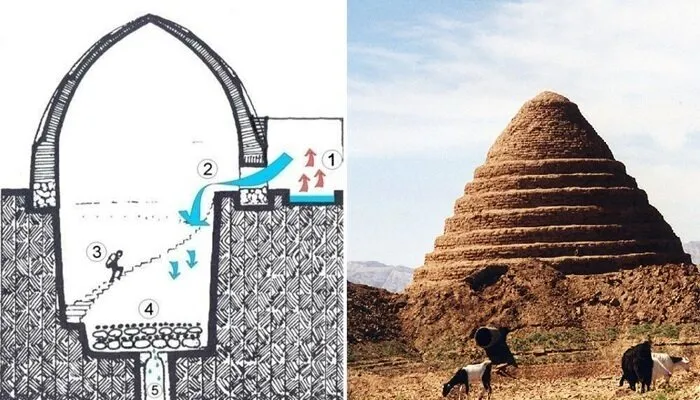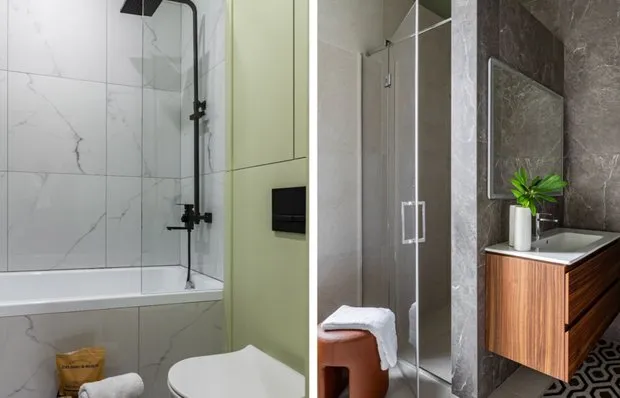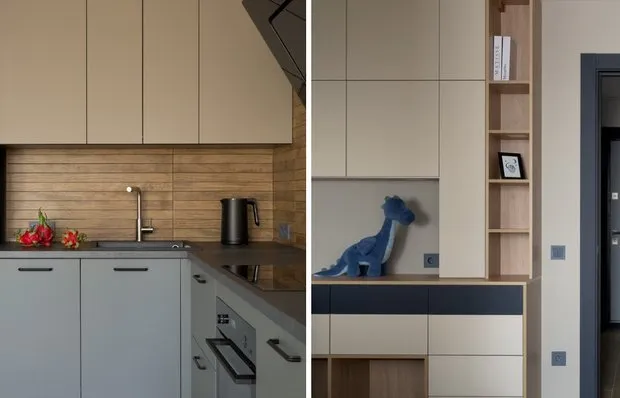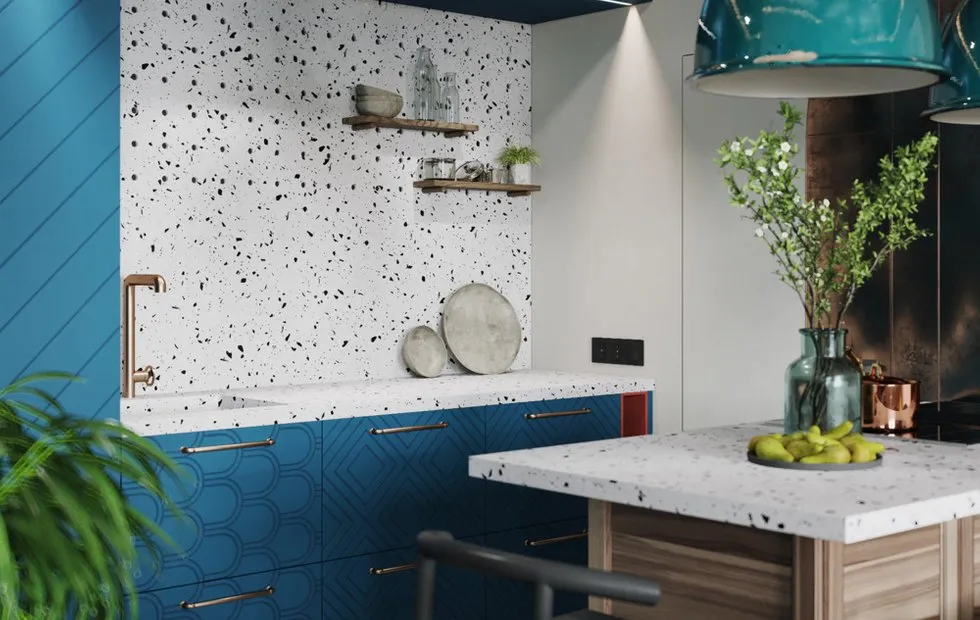There can be your advertisement
300x150
History of Refrigerators: From Ice Cellars to Smart Technology
How did humanity learn to preserve cold, and what changes did this victory bring to our lives?
Open your refrigerator — there are probably products from a week ago that are still fresh. Now imagine: 150 years ago, meat spoiled in a day, milk soured by evening, and fruits could only be eaten in season. How did humanity learn to preserve cold, and what changes did this victory bring to our lives?
Main points from the article:
- Ancient ice and cellars were the only way to keep products fresh;
- The first home refrigerator appeared in 1911 and cost as much as a car;
- Mass production of refrigerators only began after World War II;
- Refrigerators changed not only our diet but also kitchen layouts and family life;
- Modern smart refrigerators can order products and create menus.
When Ice Was More Expensive Than Gold
The earliest methods of preserving cold appeared where it was abundant — in the north. Vikings buried meat in snow, Eskimos built ice cellars, and in Siberia, perfectly preserved mammoths are still found after thousands of years in permafrost.
In warm countries, people had to invent. In Ancient Egypt, water was cooled in clay pots — evaporation through porous walls reduced temperature by several degrees. In Iran, ice houses called "yahchals" were built: tall dome structures with deep underground chambers where ice remained even in 40-degree heat.
In China, artificial ice was made as early as the 2nd century BC. In winter, water was poured onto terraces, and the resulting ice blocks were stored in deep pits filled with sawdust. This kind of ice lasted until mid-summer.
But true ice industry emerged in 19th-century America. Frederic Tudor, known as the "Ice King," began shipping ice from New England lakes to tropical countries in 1806. His ships carried tons of ice to India, Brazil, and Caribbean countries. Ice became a commodity, and cold — luxury.
Interesting fact: in the 1850s, there were 130 ice companies operating in Boston. A pound of ice cost more than a pound of coffee, and wealthy families spent up to 10% of their household budget on ice.
 Photo from novate.ru
Photo from novate.ruIce Palaces of the Rich
In Russia, ice industry also flourished but in its own way. Wealthy landlords built ice houses — special structures for storing ice. These were true cold palaces: deep basements with double walls, filled with sawdust or peat between them.
Ice was harvested in winter from clean ponds and rivers. It was cut into regular blocks, stacked in ice houses, with each layer covered in sawdust. With proper construction, such an ice house could preserve ice until the next winter or even longer.
Ice houses stored not only food, but also drinks. Chilled champagne, kvass, and berry juices — all signs of wealth. In the wealthiest homes, there were even ice rooms for cooling during hot summer days.
Peterburg restaurants were famous for fresh oysters shipped from France in ice boxes. Moscow confectioners made ice cream stored in ice cellars. In imperial palaces, ice desserts were served even in January — as a marvel of technical progress.
Interesting detail: the profession of an ice cutter was one of the most dangerous. People worked on frozen water bodies, cut ice with special saws, and carried heavy blocks. Accidents were common — people fell through the ice or got injured by sharp edges.
First Mechanical Wonders
The idea of artificial cooling emerged in the 18th century. In 1748, Scottish scientist William Cullen demonstrated the first refrigeration machine at Glasgow University. However, it had no practical application — too complex and inefficient.
A real breakthrough occurred in 1805 when American inventor Oliver Evans described a closed cooling cycle using steam. In 1820, British scientist Michael Faraday discovered that ammonia cooled significantly when compressed and then expanded.
The first commercially successful refrigeration machine was created in 1856 by Scottish doctor John Gorrie. He developed it for cooling hospitals in hot Florida. The machine compressed air and then partially cooled it with water, allowing it to expand and perform work on a piston.
In 1876, German engineer Carl von Linde created the first ammonia refrigeration machine for a brewery. This allowed brewing beer all year round, not just in winter. Breweries became the first mass consumers of refrigeration technology.
By the end of the 19th century, refrigeration machines were used in meat plants, food warehouses, and ships. But home use was still far away — machines were huge, expensive, and required constant maintenance.
Home Revolution: First Domestic Refrigerators
The first household electric refrigerator was created by American company General Electric in 1927. The model was called "Monitor Top" and cost $300 — about the price of a good Ford Model T. The refrigerator was the size of a small cabinet and consumed a lot of electricity.
The refrigerant used was ammonia — toxic and explosive gas. Leaks happened regularly, and several people died from poisoning. In 1915, Alfred Mellous developed a self-contained refrigeration system that included an electric motor and compressor sealed in a steel casing.
In 1918, engineer Nathaniel Wells from Electrolux invented a refrigerator working on an absorption principle. It was safer than ammonia models but required connection to a gas line or kerosene burner.
A real breakthrough came in 1928 with the invention of Freon — a safe refrigerant created by chemist Thomas Midgley. Freon was non-toxic, non-explosive, and excellent at cooling. This made home refrigerators safe and reliable.
By 1930, over a million refrigerators were sold in the US annually, but they remained a luxury. The average price was $300 — two months' salary for a worker.
Mass Era: Refrigerator in Every Home
After World War II, the era of mass production of refrigerators began. Military technologies were adapted for civilian use, production was scaled up, and prices dropped sharply.
In the 1950s, the refrigerator became a symbol of the American dream. Manufacturers competed in size and features: two-door models, built-in freezers, automatic defrosting, ice dispensers.
Design also mattered. Refrigerators were produced in bright colors — pink, mint, yellow. They were meant to decorate kitchens, not just store food. Advertising promised housewives freedom from daily trips for groceries.
In the USSR, the first serial refrigerators "HTZ-120" began production in 1939 at the Kharkov Tractor Plant. They were simple, reliable, and very scarce. They ran on toxic sulfur dioxide, weighed about 100 kg, but lasted decades.
Mass production began after the war. In 1951, ZIS plant (later ZIL) released the "Moscow" refrigerator — the first Soviet refrigerator using safe Freon. Getting a refrigerator was an event in itself — people waited in lines, saved money for years, and celebrated the purchase like a holiday.
Interesting fact: in 1956, at an American exhibition in Moscow, Vice President Nixon and Khrushchev held the famous "kitchen debates" near a display of household appliances. Arguing about capitalism and socialism, they stood next to a modern refrigerator — a symbol of technological progress.
The Refrigerator Changes the World
The appearance of home refrigerators revolutionized not only our diet but also lifestyle. People no longer had to go shopping daily, started buying food in bulk, and planning weekly menus.
- Kitchen layouts changed. The refrigerator became the central element, around which everything else was arranged. The concept of a "work triangle" emerged — the refrigerator, stove, and sink should be placed in convenient proximity.
- Food manufacturers also adapted. Frozen semi-finished products, ready-made meals that could be stored for weeks appeared. Supermarkets became larger with wider selections. People could buy products from other countries and climates.
- Family roles changed. Women spent less time shopping and cooking. More time was available for work, hobbies, and socializing. The refrigerator became a symbol of emancipation.
- Social relationships also changed. People met less at markets and stores, talked less with vendors and neighbors. Shopping became a routine task rather than a social event.
Technology Evolution: From Freon to Inverters
In the 1970s and 80s, refrigerators were technologically refined.
- Models No Frost appeared — no ice buildup, with forced air circulation. No more need to defrost the refrigerator every six months by scraping ice off the walls.
- Inverter compressors, invented in the 1990s, made refrigerators quieter and more energy-efficient. Instead of constant on/off cycles, compressors smoothly regulated power to maintain stable temperature.
- Environmental concerns forced the abandonment of Freon, which damaged the ozone layer. New refrigerants R-134a and R-600a were safe for the atmosphere but required new production technologies.
- Specialized storage zones emerged: freshness zone for fruits and vegetables, wine rack for drinks, freezer with different temperature settings. The refrigerator evolved from a simple box into a complex climate control system.
- Multi-Door refrigerators with multiple doors allowed creating different temperature zones for various products. French Door models with bottom freezers became popular due to convenience.
Smart Revolution: Refrigerator Goes Online
The 21st century brought a new revolution — smart refrigerators.
- In 2000, LG introduced the first internet-connected model. The refrigerator could send messages about malfunctions and expiring products.
- Modern smart refrigerators are computers with freezers. They can recognize products by barcodes, keep inventory, and suggest recipes based on available ingredients.
- Cameras inside the refrigerator allow remote viewing of contents through a smartphone app. Now you can check if milk is in the fridge without opening it.
- Some models automatically order products when they run out. The system analyzes family consumption and places orders in online stores. The refrigerator becomes a personal household assistant.
- Voice assistants turned the refrigerator into a smart home control center. You can ask it to play music, show recipes, add products to shopping lists, or check the weather forecast.
The Future of Cold: What Lies Ahead
Technology continues to evolve.
- Magnetic refrigerators use the magnetocaloric effect instead of compressors — they are quieter, more energy-efficient, and eco-friendly. Thermoelectric models work on the Peltier effect — no moving parts or refrigerants.
- Solar refrigerators powered by photovoltaic cells solve energy supply issues in remote areas. In Africa and Asia, such refrigerators preserve medicines and vaccines from spoilage.
- Modular refrigerators allow building storage systems like a constructor — adding or removing sections as needed. For small apartments, compact models; for large families, spacious systems.
- Bio-refrigerators with live bacteria maintain optimal conditions for different products. Vacuum chambers extend freshness several times over. Ultrasonic cleaners kill bacteria without chemicals.
Perhaps future refrigerators will grow food inside — hydroponic systems for greens, micro-farms for mushrooms, bioreactors for synthetic meat. The refrigerator will evolve from storage to food production.
From ice cellars to smart systems — a journey of thousands of years. But the most important changes happened in the last 100 years. The refrigerator changed what we eat, how we cook, where we buy groceries, and even how we plan our lives.
Today, we take fresh products all year round for granted. But remember: every sip of cold milk carries a story of human ingenuity, the desire to conquer nature and make life more comfortable. And this history continues — in engineers' labs creating future refrigerators.
Cover: Design project by Anna Maltseva
More articles:
 5 Common Mistakes When Designing a Combined Bathroom
5 Common Mistakes When Designing a Combined Bathroom Do You Need to Replant the Garden in Autumn or Is Raking Enough
Do You Need to Replant the Garden in Autumn or Is Raking Enough Autumn Weekend Renovation: 5 Transformations Without Dust and Noise
Autumn Weekend Renovation: 5 Transformations Without Dust and Noise How We Designed a Small Mirror Hallway
How We Designed a Small Mirror Hallway A 2-bedroom apartment where everything has its place: 5 simple storage ideas
A 2-bedroom apartment where everything has its place: 5 simple storage ideas What Will Be Trendy in Interior Design in 2026: 7 Trends
What Will Be Trendy in Interior Design in 2026: 7 Trends Last Chance to Save the Harvest: 12 Tasks on the Dacha You Can't Postpone Until October
Last Chance to Save the Harvest: 12 Tasks on the Dacha You Can't Postpone Until October Stylish 54 m² Euroduplex Interior with Dream Kitchen and Smart Storage Solutions
Stylish 54 m² Euroduplex Interior with Dream Kitchen and Smart Storage Solutions